This anecdote describes how collectors of vintage radios
have combated the electrical shorting malfunction of certain transistors
utilized in a variety of collectable radio sets.
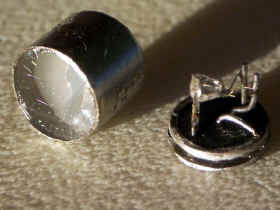
Over the years members of the UK Vintage Radio Forum have
shared tips and strategies with each other to temporarily restore
operation of a family of notoriously malfunctioning transistors by methods
such as
-
Tapping the case with a screw driver
-
Physically disconnecting the transistor terminal
connected to case
-
Passing elevated current through the suspected short
circuited terminals to fuse open the unknown shorting material inside
the transistor package by discharging a capacitor between the
terminals.
-
Replacing the transistor with a suitable alternative
device (though sometimes difficult to locate)
The remedies usually proved temporary and sometimes
destructive. Later, it was discovered by one forum participant that the
root cause of failure was electrical shorting due to tin whiskers growing
from the tin-coated walls inside of the transistor case. Over time,
the tin whiskers would grow long enough to short from the case to one or
several of the internal connections to the transistor. The discovery
of tin whiskers inside made evident the reasons why the remedies such as
described above would be temporary. For example, tapping the case or
passing elevated current might only physically shift or melt those
whiskers that were presently in a shorting position. Later, other
whiskers would continue to grow until they too produced an electrical
short thus repeating the cycle of faulty operation.
Read
More About this Anecdote Here:
Video
Describing This Tin Whisker Experience
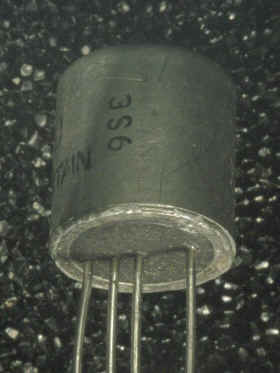
1960s era Germanium Transistor inside of a tin-plated package |
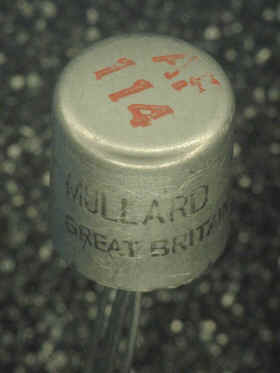
1960s era Germanium
Transistor inside of a tin-plated package |
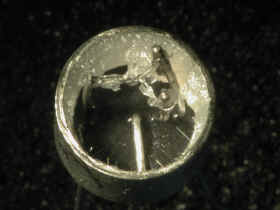
Transistor with the package cut open to reveal tin whisker
formation on the inner walls of the package |
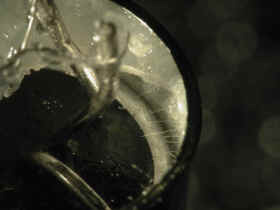
Transistor with the package cut open
to reveal tin whisker formation on the inner walls of the package |
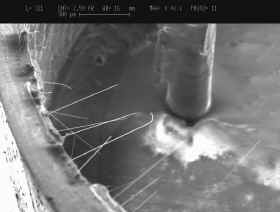
Tin whiskers growing from inside walls of tin-plated transistor |
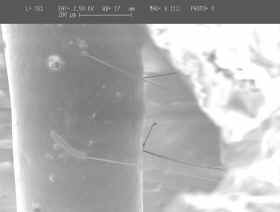
Tin whiskers shorting from tin-plated transistor case to an
internal lead |
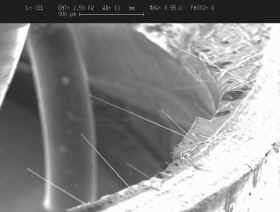
Tin
whiskers shorting from tin-plated transistor case to an internal
lead |
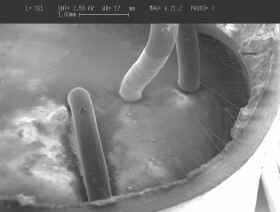
Tin
whiskers shorting from tin-plated transistor case to an internal
lead |
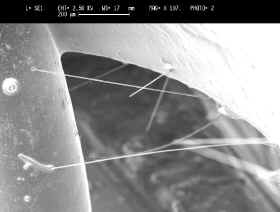
Tin
whiskers shorting from tin-plated transistor case to an internal
lead |
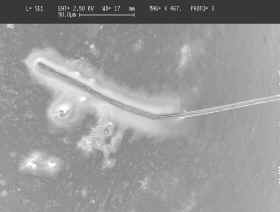
Tin
whiskers shorting from tin-plated transistor case to an internal
lead |